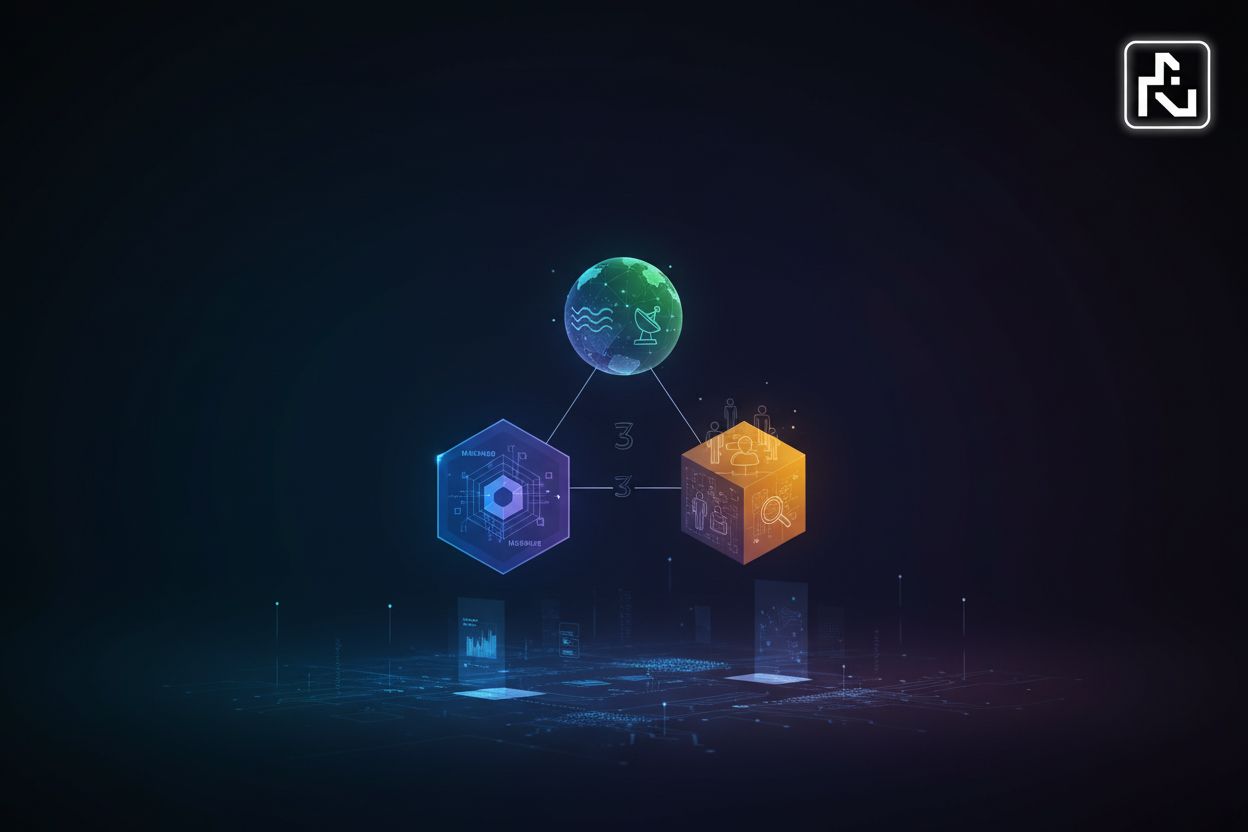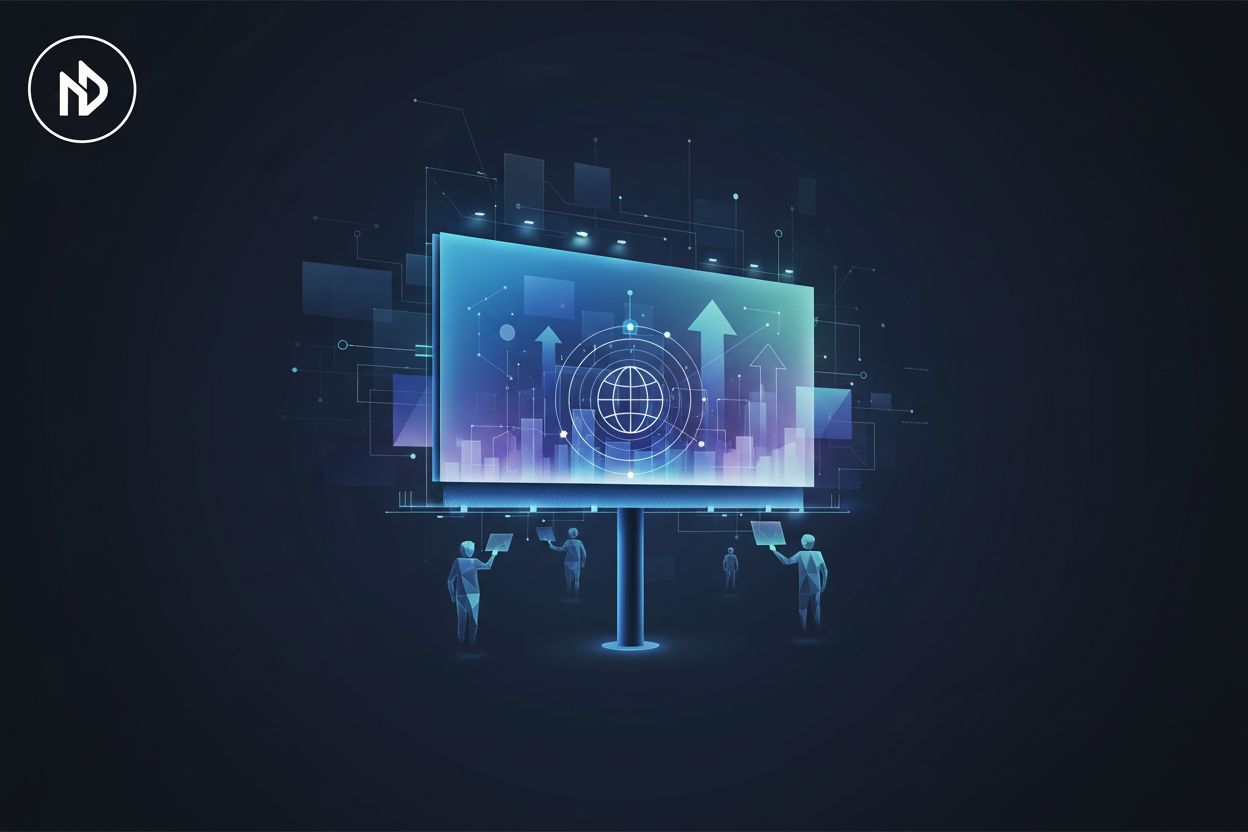Mastering Customer Journey Orchestration for Digital Transformation
TL;DR
Understanding Customer Journey Orchestration (CJO)
Customer journey orchestration (CJO) is more than just a buzzword; it's a necessity for businesses aiming to thrive in today's dynamic digital landscape. How can you ensure every customer interaction strengthens their relationship with your brand?
Customer journey orchestration is a total accounting of all interactions a customer has with your brand, encompassing everything from social media posts to customer support inquiries What is customer journey orchestration and why does your brand need it. It prioritizes a consistent and positive experience, focusing on cohesive interactions rather than just a path to purchase. CJO's increasing popularity reflects its potential to significantly benefit both businesses and customers.
CJO aligns customer experiences with broader digital transformation goals. It breaks down silos to create a unified customer view, adapting to the modern, multi-channel customer journey. As customer expectations for personalized experiences surge, CJO helps meet them effectively.
Customer journey mapping is the initial visualization of customer interactions. CJO then manages this mapped data to optimize customer paths in real-time. Customer Journey Management offers a comprehensive look at segmented customer behaviors to gauge insights. CJO goes a step further, focusing on individual customer behavior to map strategy.
Understanding CJO is the first step toward creating meaningful customer experiences. The next section will explore the benefits of CJO.
Key Benefits of Customer Journey Orchestration
Are your customer interactions hitting the mark, or just adding to the noise? Customer journey orchestration (CJO) offers ways to ensure every interaction counts.
CJO enables businesses to deliver personalized experiences across all channels and devices. It uses real-time data to ensure that customers receive tailored content and offers, making each interaction relevant and valuable.
- In today's crowded digital marketplace, standing out requires more than just a good product; it needs relevant interactions. CJO helps businesses cut through the noise and connect with customers on a personal level.
- By understanding individual customer requirements at every stage, CJO ensures that each touchpoint meets their specific needs. This leads to improved customer relationship metrics, fostering loyalty and retention.
One of the key benefits of CJO is the ability to provide contextual experiences based on real-time insights. It helps businesses understand their customers' behavior and preferences, allowing them to respond in the moment.
- CJO maps customer profiles by recognizing interactions, habits, and preferences. This comprehensive view enables businesses to create real-time responses and clear communications, enhancing engagement.
- By eliminating roadblocks and friction points in the customer journey, CJO ensures a smooth and satisfying experience. This proactive approach fosters stronger customer relationships and increases loyalty.
According to Mosaicx, businesses can close customer service gaps with critical data and contextual information. CJO equips support teams to address problems effectively.
- With CJO, support teams can gather critical data from the first interaction, enabling them to address problems on the first call. This reduces customer frustration and improves satisfaction.
- CJO facilitates cross-channel data sharing for better customer service. This unified approach ensures that support teams have a complete view of the customer's journey, regardless of the channel they use.
By understanding the customer journey and implementing CJO, businesses can transform their customer interactions. The next section will delve into the essential components of a successful CJO strategy.
Implementing Customer Journey Orchestration: A Practical Guide
Is your customer journey a smooth, scenic route or a bumpy, confusing detour? Successfully implementing customer journey orchestration (CJO) can transform that experience.
Data is the fuel that powers effective CJO. It's not just about collecting data, but understanding what to collect and how it connects to the customer journey.
- Start by identifying relevant data sets from every possible source. This includes website interactions, social media engagement, email responses, and even offline interactions.
- Gather customer details such as contact information, demographics, and purchase history. Also, track customer behavior like browsing patterns and content consumption. Don't forget service interactions (support tickets, chat logs) and transaction data (purchases, returns).
- It is important to follow data privacy regulations. Prioritize data privacy and compliance to build trust and avoid legal issues.
- Finally, build a resilient data foundation that can adapt to new data sources and changing business needs.
Customers interact with businesses across many channels. CJO must deliver seamless experiences regardless of how they choose to engage.
- Provide seamless customer experiences across all channels, whether it's a mobile app, website, social media, or in-store visit.
- Tailor experiences to each channel while maintaining consistent quality and brand messaging. A mobile app experience should differ from a desktop experience but should retain the same brand feel.
- Engage with your customers at the right time and place.
- Integrate digital and traditional channels to create a unified customer experience.
The final step involves turning data into actionable insights. This enables continuous improvement of the customer journey.
- Manage and analyze real-time data using appropriate tools. These tools should offer robust analytics and reporting capabilities.
- Outline campaigns on an individual level and predict future intents. This allows for personalized interactions that resonate with each customer.
- Optimize the customer journey towards a sale and identify re-engagement prospects. Focus on removing friction points and guiding customers toward conversion.
- Use insights to improve touchpoints and enhance the overall customer experience.
By implementing these steps, businesses can create a customer-centric approach. This drives loyalty and achieves digital transformation goals. Next, we'll explore how to measure the success of CJO efforts.
The Role of Technology in Customer Journey Orchestration
Technology is the backbone of effective customer journey orchestration (CJO). Selecting the right tools and platforms can transform disjointed interactions into seamless experiences. Let's explore the technological components essential for successful CJO.
Customer Data Platforms (CDPs) play a vital role in CJO by creating unified customer profiles. These platforms gather data from various sources to provide a single, comprehensive view of each customer. This holistic view enables businesses to personalize interactions and ensure consistent experiences across all touchpoints.
CDPs adapt to the ever-changing nature of data and compliance requirements. A resilient data foundation involves identifying and integrating new data sources, such as digital behavior and customer sentiment. This adaptability, along with a privacy-first approach to data management, helps organizations maintain an edge.
AI and machine learning (ML) algorithms automate personalized experiences with minimal human input. These technologies ensure real-time mapping and management of every customer touchpoint, optimizing interactions around the clock. AI can also make personalized recommendations and set reminders for services.
AI-Driven Virtual Agents (IVAs) streamline and personalize customer interactions. IVAs use natural language understanding (NLU) to generate personalized responses, answering questions and helping customers make purchases. These virtual agents can engage customers through multiple touchpoints.
Integrating CJO tools with existing marketing technologies is critical. A well-integrated MarTech stack ensures seamless data flow and alignment across systems. Optimizing the tech stack for efficiency and effectiveness improves journey visualization and overall performance.
By implementing these technologies, businesses can create more personalized and efficient customer journeys. The next section will delve into measuring the success of CJO efforts.
Customer Journey Orchestration Engines (JOEs)
Are you struggling to manage the many moving parts of the customer journey? Customer journey orchestration engines (JOEs) could be the answer.
A journey orchestration engine is marketing technology that combines real-time customer analytics with real-time decisioning. This combination delivers communications tailored to customer needs across various channels. Essentially, JOEs manage and curate the customer journey, rather than just managing channels in isolation. The ultimate goal is to create exceptional customer experiences at the individual level.
JOEs are adept at three critical capabilities, known as JAMM:
- Journey Analytics: These tools measure and report on all aspects of the customer journey. They reveal how each interaction impacts a transaction, exposing potential friction points and opportunities for improvement.
- Journey Mapping: This capability visualizes each interaction a customer has with your brand. The mapping tools collect data from multiple touchpoints to create a comprehensive view of customer behavior.
- Journey Management: JOEs use maps and analytics to influence the customer journey. They use real-time data to analyze current behavior and predict and adjust future actions to optimize customer journeys.
JOEs operate through four key functions, which can be remembered through the acronym SITE:
- Systems/Data Integration: JOEs integrate data from disparate systems and platforms. This exposes every part of the customer journey, enabling marketers to understand and optimize end-to-end experiences.
- Impact/Measurement/Analytics: A core function is the ability to monitor and measure how journey improvements impact your business. This allows you to tie journey steps to specific KPIs.
- Testing & Optimization: JOEs use comprehensive journey data to test the potential impact of improvements before rolling them out. Testing can evaluate different journey scenarios and their impact on KPIs.
- Efficient Marketing Management: JOEs alert you to relevant insights using real-time customer behavior. They develop predictive models to optimize current and future experiences.
By understanding these capabilities, businesses can leverage JOEs to create more personalized and effective customer journeys. The next section will explore how to measure the success of CJO efforts.
The Business Impact of Effective Customer Journey Orchestration
Is customer journey orchestration delivering real results, or is it just another overhyped trend? Organizations implementing customer journey orchestration are seeing tangible improvements in revenue, cost savings, and customer satisfaction.
Customer journey orchestration (CJO) efforts translate into significant business outcomes. These results demonstrate the power of aligning customer experiences with business goals.
- Organizations implementing CJO have achieved revenue gains of 10-20%. Tailored customer interactions lead to higher conversion rates and increased sales.
- CJO leads to cost reductions of 15-25% through optimized processes. By eliminating inefficiencies and streamlining customer interactions, businesses can reduce operational expenses.
- Companies see customer advocacy score improvements of 20-40 points. Satisfied customers are more likely to recommend a brand, driving organic growth.
According to BCG, organizations implementing customer journey orchestration have achieved revenue gains of 10-20 percent, cost reductions of 15-25 percent, and customer advocacy score improvements of 20-40 points Customer Journey Orchestration: The Next Frontier of Connected Experiences
CJO not only boosts immediate results but also enhances long-term customer relationships. A focus on personalized experiences and continuous improvement drives loyalty and repeat business.
- Increasing customer retention through personalized experiences fosters lasting relationships. Customers are more likely to stay loyal when they feel understood and valued.
- CJO drives repeat purchases and brand loyalty by delivering relevant and timely offers. Personalized interactions encourage customers to return and make additional purchases.
- By reducing churn and improving customer satisfaction, CJO ensures a stable customer base. Happy customers are less likely to switch to competitors.
- The ultimate goal is optimizing individual journeys to increase CLTV. By focusing on the entire customer lifecycle, from initial contact to long-term engagement, businesses can maximize the value of each customer relationship.
CJO directly impacts key business metrics. Next, we'll explore how to measure the success of CJO efforts.
Future Trends in Customer Journey Orchestration
The customer journey is constantly evolving, but what does the future hold for businesses striving to create exceptional experiences? The next wave of customer journey orchestration (CJO) will be shaped by several key trends.
Predictive analytics will become increasingly crucial for anticipating customer needs. By analyzing historical data and real-time behaviors, AI can forecast customer actions and proactively tailor interactions. For example, in healthcare, AI can predict when a patient might need a follow-up appointment based on their medical history and recent activity.
Automated personalization at scale is another significant trend. AI algorithms can personalize content, offers, and interactions for millions of customers simultaneously. This ensures each customer receives a relevant and engaging experience, regardless of their touchpoint.
Intelligent decision-making will drive optimal customer interactions. AI can analyze various factors, such as customer preferences, context, and past interactions, to determine the best course of action in real-time. This leads to more effective and efficient customer engagement.
AI in digital marketing is becoming a core component of CJO. AI-powered tools are being used to optimize advertising campaigns, personalize website content, and automate customer service interactions. This integration allows businesses to deliver more targeted and relevant experiences.
Building trust through transparent data practices is critical. Customers are more likely to engage with businesses that are open about how they collect and use data. Transparency builds confidence and fosters stronger relationships.
Complying with data privacy regulations, such as GDPR and CCPA, is essential. Businesses must adhere to these regulations to protect customer data and avoid legal repercussions.
Ensuring ethical use of customer data is another key consideration. Businesses should use data responsibly and avoid practices that could be perceived as manipulative or intrusive.
Prioritizing consent-enabled experiences is crucial for respecting customer preferences. Businesses should obtain explicit consent from customers before collecting and using their data. This ensures that customers have control over their information.
The move towards hyper-personalization will enable businesses to create truly one-to-one customer experiences. By leveraging real-time data and insights, businesses can tailor interactions to meet the unique needs and preferences of each customer.
Creating truly one-to-one customer experiences is the ultimate goal of personalization. This involves understanding each customer's individual journey and delivering interactions that are relevant, timely, and valuable.
Leveraging real-time data is essential for tailoring interactions. By analyzing real-time data, businesses can respond to customer needs in the moment and create more engaging experiences.
Focusing on customer-centric approaches is crucial for successful CJO. Businesses should prioritize the needs and preferences of their customers over their own goals. This fosters stronger relationships and drives loyalty.
As CJO continues to evolve, these trends will shape the way businesses interact with their customers. By embracing AI, prioritizing data privacy, and focusing on personalization, businesses can create exceptional experiences that drive loyalty and growth.




